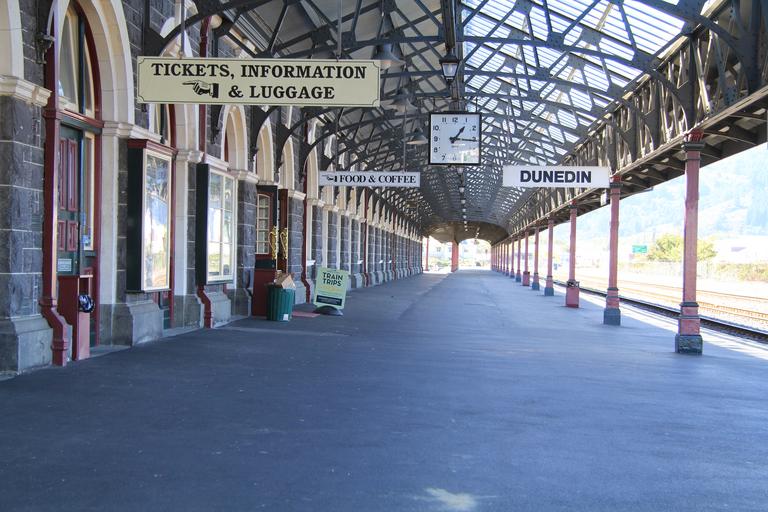MAKE A MEME
View Large Image

| View Original: | Dunedin_Railway_Platform.jpg (5184x3456) | |||
| Download: | Original | Medium | Small | Thumb |
| Courtesy of: | www.flickr.com | More Like This | ||
| Keywords: road architecture In an eclectic, revived Flemish renaissance style, (Renaissance Revival architecture), the station is constructed of dark basalt from Kokonga in the Strath-Taieri with lighter Oamaru stone facings, giving it the distinctive light and dark pattern common to many of the grander buildings of Dunedin and Christchurch. Pink granite was used for a series of supporting pillars which line a colonnade at the front. The roof was tiled in terracotta shingles from Marseilles surmounted by copper-domed cupolas. The southern end is dominated by the 37-metre clocktower visible from much of central Dunedin. The booking hall features a mosaic floor of almost 750,000 Minton tiles. A frieze of Royal Doulton porcelain runs around the balcony above it from which the floor's design, featuring a locomotive and related symbols, can be clearly seen. The main platform is the country's longest,[citation needed] extending for about 500 metres. The foundation stone was laid by the Minister of Railways Joseph Ward on 3 June 1904. The Prime Minister Richard Seddon was also present. The station was opened by Ward, by then Prime Minister, in 1906. Construction was kept within budget, and cost £40,000. en.wikipedia.org/wiki/Dunedin_Railway_Station In an eclectic, revived Flemish renaissance style, (Renaissance Revival architecture), the station is constructed of dark basalt from Kokonga in the Strath-Taieri with lighter Oamaru stone facings, giving it the distinctive light and dark pattern common to many of the grander buildings of Dunedin and Christchurch. Pink granite was used for a series of supporting pillars which line a colonnade at the front. The roof was tiled in terracotta shingles from Marseilles surmounted by copper-domed cupolas. The southern end is dominated by the 37-metre clocktower visible from much of central Dunedin. The booking hall features a mosaic floor of almost 750,000 Minton tiles. A frieze of Royal Doulton porcelain runs around the balcony above it from which the floor's design, featuring a locomotive and related symbols, can be clearly seen. The main platform is the country's longest,[citation needed] extending for about 500 metres. The foundation stone was laid by the Minister of Railways Joseph Ward on 3 June 1904. The Prime Minister Richard Seddon was also present. The station was opened by Ward, by then Prime Minister, in 1906. Construction was kept within budget, and cost £40,000. en.wikipedia.org/wiki/Dunedin_Railway_Station | ||||